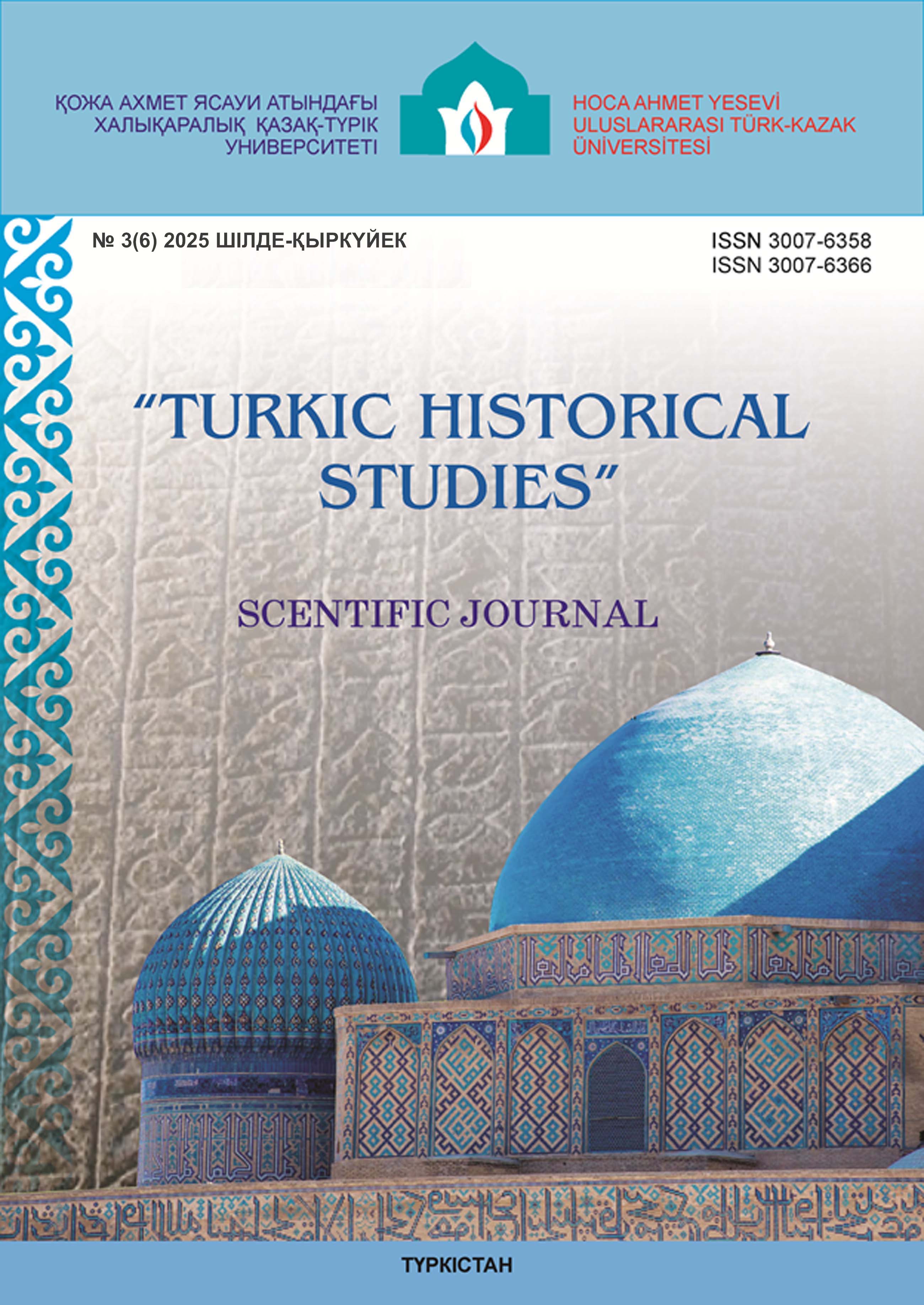KIDARITES RULE IN NORTHWESTERN INDIA: CONQUEST, GOVERNANCE, AND LEGACY
31 36
Keywords:
Kidarites, Tokharistan, Gandhara, Northwestern India, Chionites, Huns, Hephthalites, Kushans, archaeology, numismatics, written sources, Sasanian Empire, Gupta Empire, Punjab, Kabul, Balkh, international trade, Buddhist culture, cultural continuity, nomadic confederations, post-imperial transition.Abstract
This article provides a comprehensive study of the history of the Kidarites kingdom (4th–5th centuries CE), analyzing its conquest, governance, and legacy in northwestern India and adjacent regions. Drawing on a wide range of sources—written records, archaeological materials, and numismatic evidence—the research aims to reassess the role of the Kidarites as both conquerors and state-builders. Written sources, including Chinese chronicles, Roman and Byzantine historians, Armenian and Persian records, and Indian epigraphic inscriptions, shed light on the political, military, and diplomatic activities of the Kidarites in Tokharistan, Gandhara, and the Punjab region. Archaeological evidence, such as urban destruction layers and settlement patterns, reflects the territorial shifts and sociopolitical disruptions caused by their invasions, while also demonstrating attempts to restore governance and stability.
Numismatic materials play a central role in the analysis, illustrating how the Kidarites legitimized their authority by adopting Kushan titles, iconography, and administrative traditions. The circulation of their gold and silver coins underscores not only their economic power but also their active participation in regional and international trade networks connecting Central Asia, Iran, and India. The article further highlights the transitional nature of the Kidarites polity, situating them between the decline of the Kushan Empire and the rise of the Hephthalites (White Huns). Despite their relatively brief dominance, the Kidarites contributed to the preservation of Kushan legacies in art, governance, and religious life, while also introducing new nomadic-military elements into the region's political landscape.
The study emphasizes that the Kidarites should not be seen merely as destructive invaders but rather as a dynamic force that bridged two historical epochs. Their rule exemplifies how nomadic confederations could integrate sedentary administrative traditions, maintain trade routes, and contribute to cultural continuity in post-imperial South and Central Asia. In this respect, the Kidarites represent an important, though often overlooked, chapter in the history of the region, whose impact resonated long after their political decline.

